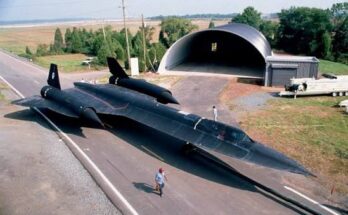
British Airways Flight 5390: The Incredible Survival Story of a Captain Sucked Out of the Cockpit
British Airways Flight 5390: The Incredible Survival Story of a Captain Sucked Out of the Cockpit
On June 10, 1990, British Airways Flight 5390, a BAC One-Eleven aircraft, took off from Birmingham, England, on a routine flight to Málaga, Spain. But what should have been an uneventful journey quickly turned into a terrifying ordeal when a section of the cockpit windscreen blew out at 17,000 feet, partially ejecting the captain from the aircraft.
In a remarkable display of teamwork, the crew managed to keep the aircraft under control and bring it safely to the ground. This shocking incident remains one of the most incredible survival stories in aviation history.
The Incident: A Windshield Failure at 17,000 Feet
Shortly after takeoff, Flight 5390 climbed to 17,000 feet. The crew consisted of Captain Tim Lancaster, First Officer Alastair Atchison, and four flight attendants who were attending to 81 passengers onboard.
Without warning, a panel of the cockpit windscreen suddenly separated from the aircraft, causing a violent decompression. The force of the rushing air immediately sucked Captain Lancaster out of his seat, and his upper body was ejected through the opening. His legs got caught on the control column, preventing him from being completely pulled out into the sky.
A Fight for Survival: The Crew’s Heroic Efforts
As the captain dangled outside the aircraft, his head and torso exposed to the freezing, oxygen-deprived air at high altitude, the cabin crew rushed to assist. Flight attendant Nigel Ogden, who had been entering the cockpit at the time, immediately grabbed Lancaster’s belt and held on to him to prevent him from being lost.

The immense wind pressure inside the cockpit made communication almost impossible, and the first officer, Atchison, was left to fly the plane alone while also handling radio communications. Despite the terrifying situation, he remained calm and began descending the aircraft immediately to reach a lower altitude where the air was breathable.
Meanwhile, the flight attendants struggled to keep hold of the captain. At one point, due to the force of the wind, his body was pressed tightly against the fuselage, leading the crew to believe he had already died. Despite this, they refused to let go, fearing that releasing him could cause his body to strike the aircraft’s engine or wings, potentially causing further damage.
A Safe Landing Against All Odds
Atchison, an experienced first officer, skillfully navigated the aircraft toward Southampton Airport for an emergency landing. Throughout the descent, the crew remained committed to holding onto Captain Lancaster, even as they endured extreme cold and exhaustion.
Despite the overwhelming challenges, Atchison successfully landed the aircraft in Southampton. Emergency services rushed to the scene, and to everyone’s astonishment, Captain Lancaster was still alive. He was immediately taken to the hospital, where he was treated for frostbite, shock, and multiple fractures.
The Aftermath: Investigation and Lessons Learned
Following the incident, investigators from the UK’s Air Accidents Investigation Branch (AAIB) launched an inquiry into the cause of the windscreen failure. Their findings revealed a shocking oversight—during a routine maintenance check before the flight, engineers had replaced the windshield but had used the wrong-sized bolts.
The bolts were slightly too small in diameter, making them incapable of withstanding the air pressure at high altitude. Over time, vibrations loosened the bolts, and eventually, the windscreen panel failed entirely.
Changes in Aviation Safety
The British Airways Flight 5390 incident led to significant changes in aircraft maintenance regulations. Some of the key improvements included:
1. Stricter Quality Control in Maintenance: Airlines implemented more rigorous checks to ensure that all replacement parts met precise specifications.
2. Enhanced Training for Engineers: Maintenance personnel received improved training to prevent similar errors from occurring in the future.
3. Better Safety Procedures for Cockpit Windows: New standards were introduced for installing and inspecting cockpit windshields to minimize the risk of failure.
The Captain’s Miraculous Recovery
Despite suffering severe injuries, Captain Tim Lancaster made a remarkable recovery and returned to flying commercial aircraft less than six months after the incident. His courage and the extraordinary efforts of his crew were widely recognized, and he continued to serve in the aviation industry until his retirement.

First Officer Alastair Atchison, whose calm and decisive actions were crucial in saving the aircraft and everyone onboard, was praised for his professionalism. He continued his career as a pilot and later retired after decades of service.
A Story of Heroism and Survival
The British Airways Flight 5390 incident remains one of the most incredible survival stories in aviation history. The sheer determination of the flight attendants, the skill of First Officer Atchison, and the resilience of Captain Lancaster turned what could have been a catastrophic disaster into a story of heroism.
This incident serves as a testament to the importance of well-trained flight crews and rigorous aircraft maintenance standards, ensuring that air travel remains one of the safest modes of transportation.


